
* As aerospace development programs have become more complicated and expensive over the last decades, countries have increasing pooled their resources to share program costs. Helicopters have been part of this trend, resulting in international programs to develop the Leonardo (originally AgustaWestland) "AW101" and the NH Industries "NH90". These are state-of-the-art rotorcraft, intended for transport, maritime warfare, and search and rescue roles. This document provides a history and description of the AW101 and NH90. A list of illustration credits is provided at the end.

* In the late 1970s, confronted with hundreds of Soviet attack submarines that threatened the sea lanes connecting Europe to America in time of war, the British Royal Navy (RN) and the Marina Militaire Italiane (MMI / Italian Navy) formulated a requirement for an advanced antisubmarine warfare (ASW) helicopter, to replace the Sikorsky-Agusta-Westland Sea King then in service for this role.
Westland of Britain's initial studies for a "Sea King Replacement (SKR)" were given the designation "WG.34". Basic requirements were for a helicopter that was more compact than the Sea King, but had a greater lift capability, and of course general improvements in operational performance and maintainability. Discussions between Westland and Agusta of Italy on the SKR quickly resulted in the formation in June 1980 of a joint company named "European Helicopter (EH) Industries", with its headquarters in London, to develop the new helicopter. Work was apportioned between the two parent companies to give them roughly equal shares without duplication. The machine was originally designated "EH101", but redesignated "AW101" in 2007; the newer designation is used here for the sake of simplicity.
As design studies progressed, it was decided that transport versions should be developed as well. Ultimately, a number of different AW101 variants were proposed:
A full-scale mockup of the AW101 was displayed at the Paris Air Show in 1985. A single ground test airframe called the "Iron Bird" and a total of nine flying pre-production prototypes ("PP"s) were built:
Initial production orders for the AW101 took place in 1991, with civil certification for the UK, Italy, and US following in 1994.
* The AW101 emerged as an attractive, sleek helicopter of generally conventional main / tail rotor configuration. It featured a five-blade main rotor with paddles on the end of the blades, a four-blade tail rotor, and retractable undercarriage. It was powered by three turboshaft engines, with the engine type depending on the variant, with an auxiliary power unit (APU) for ground power and engine starting. The rotors were made of composite materials, while the fuselage was made of honeycomb lithium-aluminum alloy, with composite paneling. The tail boom folded forward, except in variants with a rear loading ramp.
The AW101 had an emergency flotation system using helium-inflated polyethylene-kevlar floats, as well as anti-icing features such as sideways-facing turbine inlets, provided because icing had been a severe problem with the Sea King. The machine had a single-point pressure refueling system that allowed it to be topped off in a few minutes.
* Development of the AW101 was protracted, for a number of reasons:
In July 2000, EH Industries was replaced by a full merger of Agusta and Westland, known simply as "AgustaWestland", and that is why the EH101 designation was, eventually, changed to AW101. In 2016, after another set of changes, the firm became "Leonardo Helicopters". For now, the "AW101" designation is being retained.
BACK_TO_TOP* Originally, the two British AW101 variants were the Royal Navy's "Merlin HM.1" ASW helicopter and the Royal Air Force's (RAF) "Merlin HC.3" combat transport. Both were powered by three Rolls-Royce Turbomeca RTM322-01/8 or RTM332-02/8 turboshaft engines with 1,575 kW (2,100 SHP) for take-off.
The Merlin HM.1 was an impressive rotorcraft, but its development wasn't smooth. The procurement plan ran well over budget, and was more than five years behind schedule. However, aircrews were enthusiastic when they received the new helicopter, praising it as "simple to handle, extremely capable, and agile." They were very impressed with its avionics and particularly its autopilot system. The Merlin's "Joint Tactical Information Display System (JTIDS)" data link capability was a particular plus, allowing operators to access "floods of data", and the helicopter was highly maintainable.
_______________________________________________________________
AGUSTA-WESTLAND MERLIN HM.1:
_______________________________________________________________
fuselage length:
19.5 meters (64 feet)
length (with rotor):
22.8 meters (74 feet 9 inches)
height (with rotor):
6.65 meters (21 feet 10 inches)
main rotor diameter:
18.6 meters (61 feet)
empty weight:
10,500 kilograms (23,150 pounds)
maximum speed:
309 KPH (192 MPH / 167 KT)
cruise speed:
278 KPH (173 MPH / 150 KT)
service ceiling:
4,575 meters (15,000 feet)
_______________________________________________________________
The Merlin HM.1 carried a pilot, copilot-observer, and two electronics systems operators. The helicopter's electronics suite, integrated by Lockheed Martin UK, provided formidable combat capabilities. The suite included an active Thomson Marconi dipping sonar that was so powerful that two HM.1s could effectively monitor the entire English Channel for submarine activity. The HM.1 also carried a suite of various types of sonobuoys, packed in two rotary stores stations in the rear of the cabin.

The Merlin carried a Blue Kestrel 5000 radar on the underside of the fuselage that provides 360-degree coverage and guidance capability for antiship missiles. An Orange Reaper (Racal Kestrel) electronic support measures (ESM) system used six antennas to detect, locate, and identify about 2,000 different types of emitters. At least some of the Merlin HM.1 fleet were later fitted with the Wescam MX-15 electro-optic imager turret.
Sensor data was processed, fused, and displayed by the Common Control Unit processor, which interfaced to the pilot, co-pilot, and to electronic systems operators in the cabin. The data was displayed overlaid on digital maps of the seabed. The HM.1 carried a set of radios fitted for encrypted communications. The only armament qualified was the Marconi Stingray torpedo, with the helicopter carrying up to four. AW101 mockups were displayed with Exocet antiship missiles, but the Royal Navy didn't use the Merlin to carry antiship missiles, that mission being performed by other platforms.
The Royal Navy obtained 44 Merlin HM.1s, for operations off frigates and other RN combat vessels. The first production aircraft flew on 6 December 1995, and the first fitted with operational avionics flew on 14 January 1997. A flight trials unit was formed as Number 700M Squadron on 1 December 1998. Number 824 Naval Air Squadron was formed for training in June 2000. The first frontline Merlin squadron, Number 814, was commissioned in late 2001, to be followed by Number 820 and Number 829 Squadron. The last of the 44 Merlin HM.1s was delivered in late 2002.
In 2006, a "Capability Sustainment Plus (CSP)" upgrade program was initiated for the Royal Navy's Merlin HM.1s, with the contract awarded to Lockheed Martin. The upgrade featured:
The "HM.2" upgrade reduced weight by 40 kilograms (88 pounds), improved serviceability, and widened the AW101's flight envelope. 30 of the 44 rotorcraft purchased were upgraded, the first being re-delivered in late 2012, the last in late 2016. All 30 of the HM.2s are, as of 2024, to be updated with a new search radar, to keep them in service until at least 2040.
In addition, under the "Crowsnest" program, the Royal Navy decided to use the Merlin HM.2 as a shipboard airborne early warning (AEW) radar platform, replacing retired Westland Sea King AEW helicopters in that role. Thales UK won the contract for the update program in 2015. Although Lockheed Martin had performed trials of an AW101 with a podded "active array" radar system, -- developed by Lockheed Martin and Northrop Grumman, derived from the radar for the F-35 strike fighter -- the UK MOD chose the Thales solution.
The Thales system was based on the Searchwater 2000 radar and Cerebus mission system. This system had been previously used on the Sea King AEW, but modernized, with:
The radar system was designed as a "roll-on / roll-off" solution, with all the HM.2 helicopters modified to permit its quick installation, or removal, as need arose -- though only ten radar kits were to be acquired. Initial flight of an HM.2 with the radar was in March 2019; introduction to service was delayed to 2021, as the first of the UK's two new aircraft carriers came online. Crowsnest, however, will only be an interim solution, with the Royal Navy seeking a next-generation system beyond it.
* The RAF Merlin HC.3 transport could accommodate 30 troops, sixteen stretchers, or other loads of comparable weight. The first HC.3 flew on 24 December 1998. Initial operating capability was achieved in the summer of 2000, with the type going into service with RAF Number 28 and Number 72 Squadrons. The last of 22 Merlin HC.3s ordered was delivered in late 2002.
In response to urgent operational requirements in Afghanistan and Iraq, in 2007 six more HC.3s were bought from the Danish Air Force -- see below -- only months after they had been delivered, with these machines designated "HC.3A". They were later production than the HC.3s, and had a number of differences, including five fuel tanks instead of four; a different window arrangement; and a distinctively different nose, intended to accommodate a lidar terrain warning & avoidance system, along with weather radar and an imager system.
The Merlin HC.3 was less sophisticated than the HM.1, and did not suffer as much from development problems. The HC.3 differed from the HM.1 in having a rear-fuselage loading ramp, and of course did not have the elaborate ASW avionics fit of the HM.1.
However, the HC.3 was well-fitted for combat operations, with kit that made it suitable for combat search and rescue (CSAR) or special operations missions along with general transport and utility use. The HC.3 had:
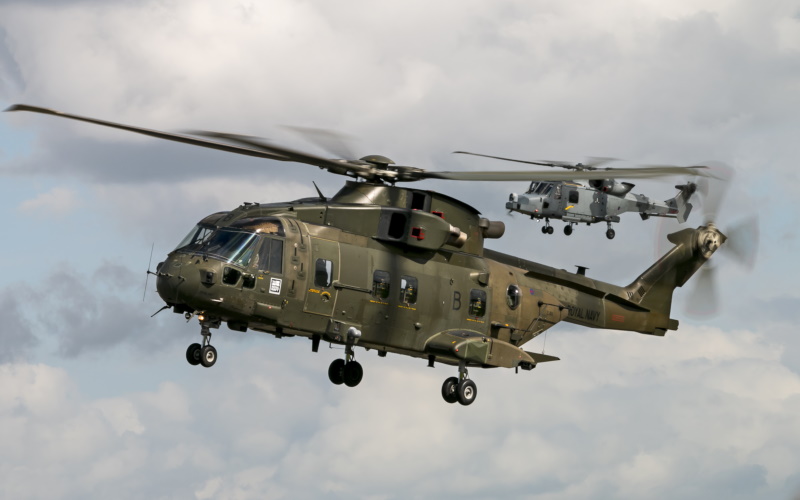
The type's first operational service was in deployment to Bosnia in 2003, leading to service in Iraq and Afghanistan. Operational availability was outstanding, even given the tough environments. The British, and other AW101 users, did report tail rotor hub cracking problems, but this problem was not generally regarded as a show-stopper, simply something maintenance crews needed to keep an eye on; a replacement tail rotor was subsequently developed.
The RAF abandoned the HC.3, the service preferring to focus on the Boeing CH-47 Chinook as its heavy helicopter asset. 25 of the 27 HC.3/3As -- 19 HC.3s and 6 HC.3As -- were transferred to the Royal Navy for use with the Commando Helicopter Force in 2015, with these machines to be upgraded to "HC.4/4A" standard -- with folding tailboom and main rotor system, modified undercarriage for flight deck operations, plus associated tie-down connections, the updated cockpit of the HM.2, enhanced defensive countermeasures, and a fast-roping beam.
Seven of the HC.3s were updated on a fast-track interim basis for shipboard operations as "iHC.3s", to be later run through the HC.4 upgrade. First flight of an upgraded HC.4 machine was in October 2016, with initial return to service of HC.4s in 2017, ; the upgrade was completed in 2023. The HC.4s replaced RN Sea Kings.
BACK_TO_TOP* The three MMI variants of the AW101 were powered by three General Electric (GE) T700-GE-T6A engines with 1,530 kW (2,040 SHP) for take-off. Italy ordered 16 AW101s, with the first flying on 6 December 1999, initial delivery in 2000, and final delivery in 2004. The Italian Navy obtained three batches, with each batch to a different configuration:
Along with the naval requirement, the Italian Air Force (AMI) is obtaining 12 AW101s, with an option for 3 more for use in the special operations / CSAR role, these machines being given the designation of "HH-101A CAESAR". Initial flight was on 19 March 2014, with introduction to operational service in early 2016. The CAESAR featured:
The CAESAR could carry five crew and twenty fully-equipped troops.
* The Canadians were the next major buyer for the AW101, in the form of the "CH-149 Cormorant" AKA "AgustaWestland 520" search and rescue (SAR) variant. The original Canadian request, issued in 1993, was for 43 machines, including an ASW variant and a SAR variant, but this was canceled when the Canadian Liberal Party came to power in 1993. However, the need for SAR helicopters for North Atlantic rescue operations remained outstanding, and 15 Cormorants were ordered in 1998 for the SAR role.
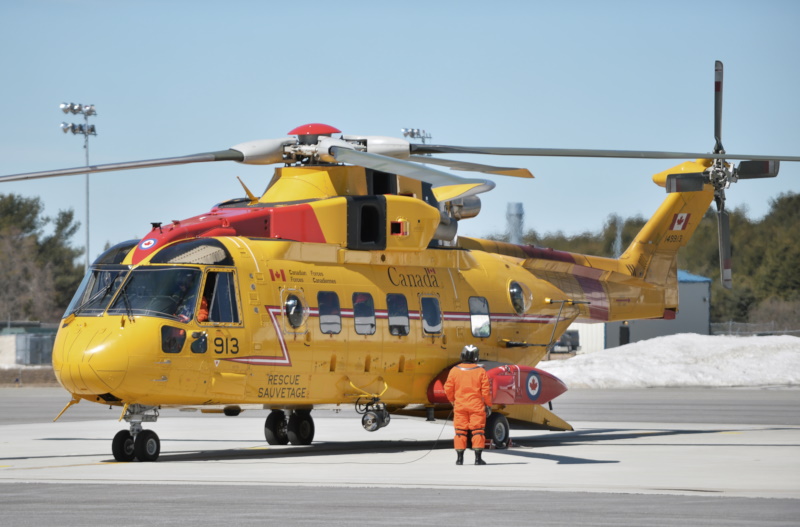
The Cormorant was based on the civil version of the AW101 as a cost-saving measure. It featured mostly commercial off-the-shelf avionics, and had a rear loading ramp and a rescue winch. The first Cormorant took to the air on 31 May 2000 at the Agusta plant in Italy, and was flown across the Atlantic in early 2001 for service with the 442 Transport & Rescue Squadron at Comox in British Columbia. Five of the CH-149s were sent there in total, initially for operational training, while the other ten were split up between 413 Squadron at Greenwood, Nova Scotia, and 103 Squadron at Gander, Newfoundland.
The AW101 was also a contender for replacement of decrepit Canadian shipborne Sea King helicopters, with a potential order for 28 new aircraft. However, in the summer of 2004, Sikorsky won the contract with their comparable H-92 helicopter.
In 2018, the Canadian government awarded a contract to Leonardo to perform a mid-life update program for the Cormorant, featuring uprated digitally-controlled engines, plus updated radar, imaging turret, rescue hoist, cockpit avionics, wireless in-cabin communications, and LED lighting. The 13 Cormorants in Canadian service will be updated, with three new AW101s obtained. The upgrade program is slated to be completed before 2025, with the rotorcraft to stay in service to 2040 or longer.
BACK_TO_TOP* Civilian models of the AW101 were powered by GE CT7-6 engines, the CT7 being the commercial equivalent of the military T700 series, with 1,440 kW (1,920 SHP) for take-off. There have been no sales of the Heliliner, which like the Merlin HC.3 could accommodate 30 passengers, but a single Series 510 was sold to the Tokyo Metropolitan Police Agency, with service entry in March 1999. A VIP transport variant was introduced in 2008 and there has been some interest in it.
Foreign sales interest in the AW101 was low at the outset, but then picked up with a number of orders:
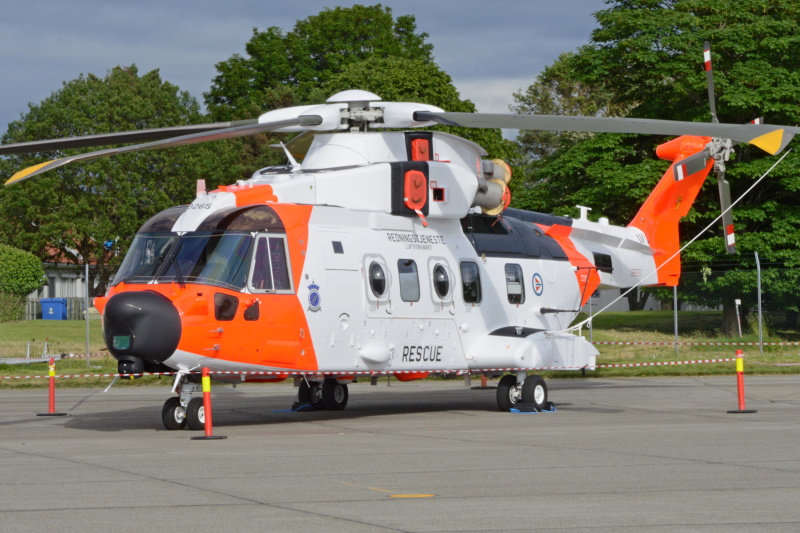
A sale was made to the Irish Air Corps, but it fell through. India ordered 12 as VIP transports, but the deal imploded in accusations of corruption and bribery. Defense procurement tends to be troublesome everywhere, but it is particularly so in India. The AW101 was also an entrant in the "VXX" competition for the next US presidential helicopter, which sought a machine with better range, speed, and payload than the current Sikorsky S-70 "Presidential Hawk" machines. AgustaWestland joined forces with Lockheed Martin, already a partner in the Merlin HM.1 program, to offer the patriotically-named "US101" variant of the AW101.
Sikorsky countered with the "VH-92" variant of their S-92 helicopter. Sikorsky was favored to win because the company had been a traditional supplier of US presidential helicopters, but somewhat to everyone's surprise, the US101 won the award in early 2005, apparently because the H-92 was still in development while the US101 was more or less "off the shelf". It was assigned the designation of "VH-71 Kestrel".
Unfortunately, the program struggled with cost and schedule creep, and when Barack Obama entered the White House in 2009, one of his first actions was to kill off the VH-71 after five flying airframes had been built, with the plan then being changed to refurbishing the existing presidential machines. The program was revived in 2013, with AgustaWestland re-entering a bid -- but Sikorsky got the award instead. The nine completed VH-71As were obtained by Canada, for use as spares hulks.
BACK_TO_TOP* The NH90 began life in the early 1980s as a European multinational development program for a new multi-purpose transport and naval helicopter, intended to replace the Bell UH-1 Huey, Aerospatiale Puma, Westland Lynx, and Sikorsky Sea King. The program was formally initiated in August 1992, with the participation of France, Germany, Italy, and the Netherlands.
The NH Industries consortium is headquartered in Aix-en-Provence in France, with the work done by Leonardo Helicopter, Airbus Helicopter, and GKN Technologies -- though at that time they were Agusta, Aerospatiale / MBB, and Fokker Aerospace respectively, with Fokker having a minority share of only about 5%, Norway became a "risk-sharing partner" in 1994; Portugal joined the group in June 2001, and has a 1.5% workshare.
The NH90, as it emerged, was of conventional appearance, with a main / tail rotor configuration and tricycle retractable landing gear. The default powerplants were two Rolls-Royce / Turbomeca RTM 322-01/9 turboshafts with a maximum rating of 1,575 kW (2,100 SHP) each, although the Italians specified General Electric T700-T6E turboshafts with 1,530 kW (2,040 SHP) each. Both types of engines had full authority digital engine control (FADEC). The power transmission system had a maximum rating of 2,560 kW (3,413 HP), so the engines would not be run at maximum power unless one fails.
The NH90 was also fitted with an APU for self-starting and ground operation. The main rotor system used four composite blades with flared tips and a titanium hub. The tail rotor was of similar configuration. The machine's crashworthy airframe was built mostly of composite materials. There was a large sliding door on both sides of the machine, and crew exit doors on both sides of the cockpit.
The NH90 was designed for survivability, reliability, and ease of maintenance. It had an automatic fire detection and extinguisher system; crash resistant, self-sealing fuel tanks; a dual redundant hydraulic system; and dual redundant MIL-STD 1553B data buses. It has built-in monitoring and diagnostic systems. The NH90's glass cockpit had five 20 x 20 centimeter (8 x 8 inch) color flat panel displays. The NH90 could be optionally fitted with a FLIR turret in the nose, as well as defensive countermeasures aids.
The NH90 was offered in two different forms, the "NATO Frigate Helicopter (NFH)" and the "Tactical Transport Helicopter (TTH)".
The NFH -- known to the Germans as the "Sea Tiger", and designated "SH-90A" by the Italians -- was intended for ASW and maritime surface warfare, though it could be used for SAR and transport roles in a pinch. It had an automatic rotor and tail folding system, plus a combat avionics suite, including a 360-degree search radar in a drum under the fuselage, magnetic anomaly detector, dipping sonar or sonobuoys, electronic support measures system, and a "Link 11" datalink system. The NFH could carry up to 700 kilograms (1,545 pounds) of stores, including antiship missiles, homing torpedoes, and air-to-air missiles. Standard crew is pilot, copilot, and one or two systems operators. The pilot wore a Thales TopOwl helmet-mounted sight system.
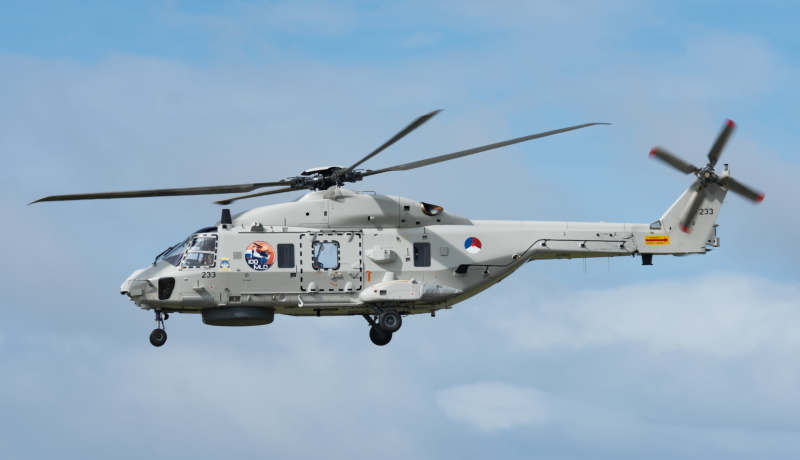
The TTH -- designated "UH-90A" and "MH-90A" by the Italians, for utility and CSAR / special operations respectively -- lacked the offensive avionics systems of the NFH, though it was fitted with weather radar. It had infrared exhaust suppressors; armored crew seats; a cable cutter; an NVG-compatible cockpit; and an optional rear loading ramp. Standard crew was pilot and copilot, with a payload capacity of 20 troops, 12 stretchers, a light tactical vehicle, or 2,500 kilograms (5,500 pounds) of cargo. The TTH could be fitted with defensive armament. It appears there were minor differences in kit between NFH and TTH versions delivered to different users.
___________________________________________________________________
NH INDUSTRIES NH90 NFH:
___________________________________________________________________
main rotor diameter:
16.3 meters (53 feet 6 inches)
tail rotor diameter:
3.2 meters (10 feet 6 inches)
fuselage length:
15.88 meters (52 feet 1 inch)
footprint length:
19.56 meters (64 feet 2 inches)
height (tail rotor):
5.44 meters (17 feet 10 inches)
empty weight:
6,800 kilograms (14,995 pounds)
empty weight (TTH):
5,400 kilograms (11,900 pounds)
max loaded weight:
10,000 kilograms (22,000 pounds)
max cruise speed:
260 KPH (160 MPH / 140 KT)
max cruise speed (TTH):
290 KPH (180 MPH / 155 KT).
service ceiling:
6,000 meters (19,700 feet)
range:
880 kilometers (550 MI / 475 NMI)
___________________________________________________________________
Five NH90 prototypes were built:
Initial production delivery, of a TTH machine to Germany, was in May 2004, followed by a delivery of a TTH to Italy in September. AgustaWestland's participation in the NH90 program meant the company was competing with itself to a degree with the AW101, but the AW101 was a larger machine and fit into a somewhat different niche.
BACK_TO_TOP* The four original partner nations have obtained hundreds of NH90s:
Portugal originally ordered 10 NH90s, but then canceled the order as a cost-cutting measure; as noted earlier, Portugal obtained the AW101. Initial production deliveries of NH90s were in 2006, though these machines were not up to operational fit, which took about another six years to obtain. NFH introduction lagged behind that of the TTH, with a lot of teething problems, and as noted later some users ended up unhappy with the NH90.
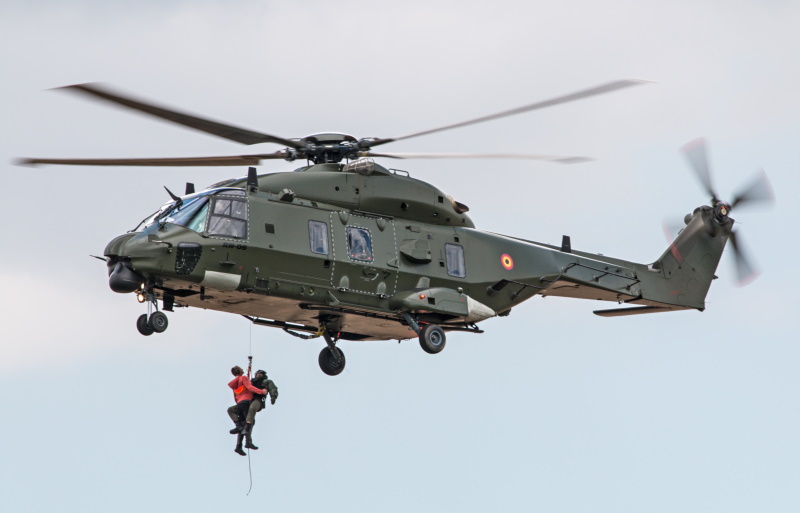
The NH90 won its first substantial order from outside the production group in 2000. Sweden, Finland, Norway, and Denmark issued a joint request for a new "Nordic Standard Helicopter" and evaluated machines from most of the major helicopter manufacturers. The Danes dropped out of the group and, as mentioned earlier, selected the AW101 since they didn't feel the NH90 was a good fit for their SAR requirements, but the other three nations went with the NH90:
Further orders followed:
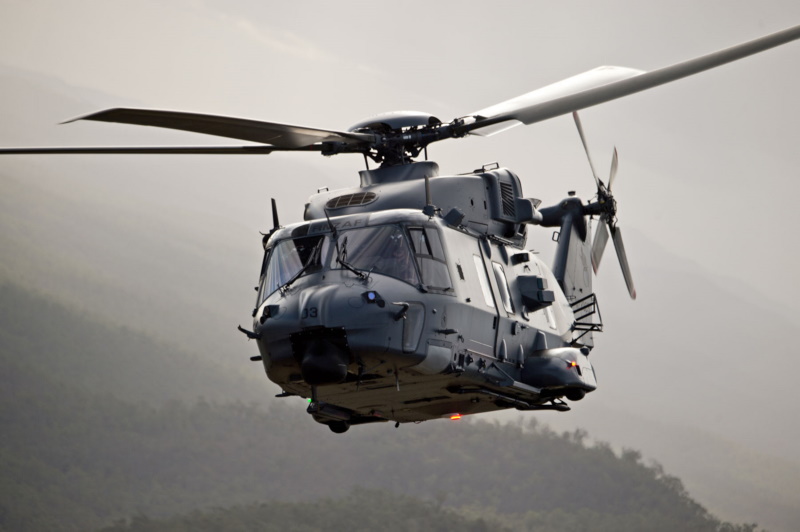
The French would like to retrofit their entire TTH fleet to the TFRA 2 standard. Some sources also mention that the "Hellas", and later "Hellas 3D", laser-radar obstacle-avoidance system has been qualified for the NH90, but it's hard to find evidence it's been adopted.
As noted, a number of NH90 users have given up on it, finding it a maintenance headache, but there are still plenty in service. There's motion towards a mid-life update (MLU) to the NH90, primarily to update avionics systems based on obsolete and unmaintainable gear. The Dutch committed to the MLU in 2022, though schedule is not clear yet; other users are likely to follow.
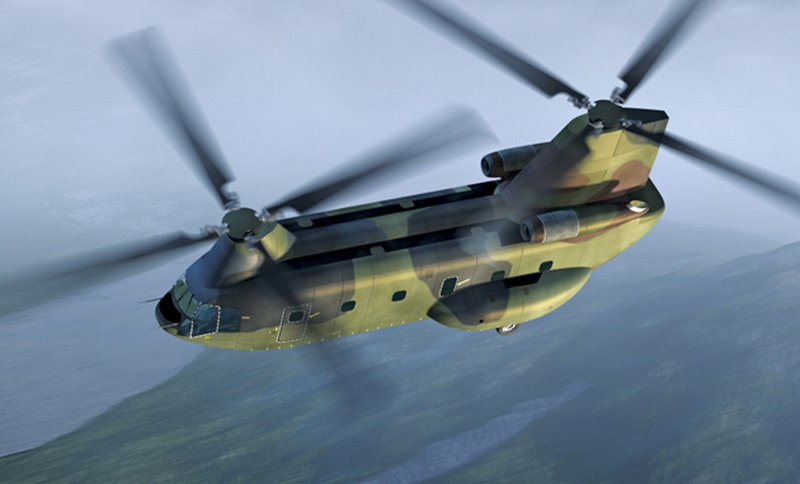
Airbus considered development of a "Heavy Transport Helicopter (HTH)" as a follow-on to the NH90. Airbus Helicopter collaborated with Boeing from 2010 on the HTH, coming up with a design that looks like an enlarged Boeing CH-47 Chinook helicopter. However, it seems like the Chinook is has become something of a NATO standard, and the HTH never went anywhere.
BACK_TO_TOP* Sources include:
The AW101 and NH90 files in the FLUG-REVUE database were used as well.
* Illustrations credits:
* Revision history:
v1.0 / 01 nov 00 v1.0.1 / 01 nov 01 / Review & polish. v2.0.0 / 01 jun 02 / Added NH90 materials. v2.0.1 / 01 jan 03 / Portugal AW101 order, Greek NH90 order. v2.0.2 / 01 jul 04 / Review & polish. v2.0.3 / 01 mar 05 / Update to mention VH101 award. v2.0.4 / 01 mar 07 / Review & polish. v2.0.5 / 01 jun 07 / Review & polish. v2.0.6 / 01 apr 09 / Review & polish. v2.0.7 / 01 mar 11 / Changed references to EH101 to AW101. v2.0.8 / 01 feb 13 / Merlin HC.3 to RN, Crowsnest program. v2.1.0 / 01 jan 15 / Qatar NH90 order, general updates. v2.1.1 / 01 dec 16 / Review & polish. v2.2.0 / 01 nov 18 / Name change of AW to Leonardo, other updates. v3.0.0 / 01 oct 20 / Review, update, illustrations update. v3.1.0 / 01 aug 22 / Review, update, & polish. v3.2.0 / 01 aug 24 / Review, update, & polish.BACK_TO_TOP
